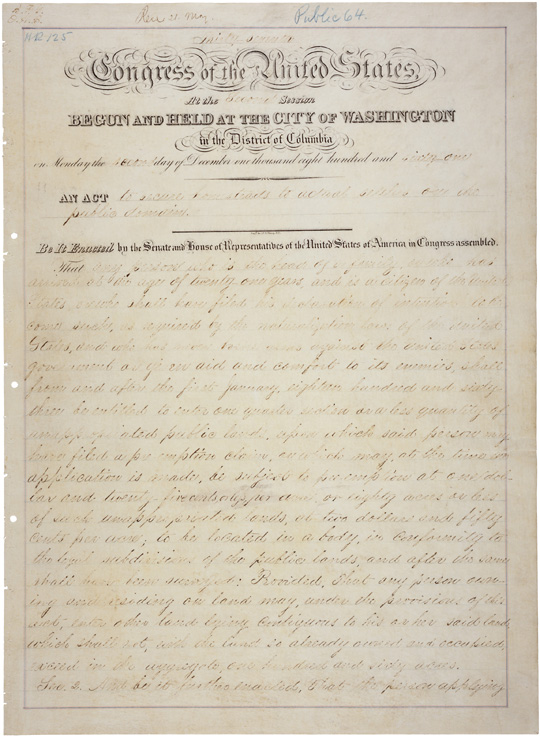Homestead Act was passed by Congress in May 1862. It provided that any person over 21, who was the head of a family, and either a citizen or an alien who intended to become a citizen, could obtain the title to 160 acres (65 hectares) of public land if he or she lived on the land for five years and improved it. Or, the settler could obtain title by paying $1.25 per acre (0.4 hectare) if he or she had lived on the land for at least six months and made improvements on it.

The sponsors of this law believed that land was worthless before it was improved, and that people who converted unoccupied land into farms should not have to pay for the land. They also hoped the law would help workers obtain homesteads (small farms) of their own.
Background.
The demand that the government grant free land to settlers began during colonial times. After the Revolutionary War, the United States government regarded its public lands simply as a way of gaining money. This policy met with considerable opposition from farmers. They wanted the government at least to sell the land at a low price. In the 1840’s and 1850’s, the homestead movement became a national political issue. Proposals for a homestead law were often introduced in Congress. But questions of land policy became involved with the slavery issue, and most Southerners opposed the bills. When the Southern States seceded from the Union, passage of a homestead law became inevitable.
Effects of the law.
The Homestead Act attracted thousands of settlers to the West. From 1862 until 1900, it provided farms and new homes for between 400,000 and 600,000 families. The opportunities offered by the act were widely advertised in America and Europe. On the whole, however, the act proved a disappointment to its friends. Through a series of other laws, Congress granted much of the best land in the West to railroad builders or to the states for the support of agricultural colleges. Workers were not attracted to the West.
Those who tried to develop homesteads in the West faced unexpected problems. They were not used to farming conditions on the plains. Farmers often had to use irrigation because rainfall was scarce. The development of farm machinery made a farm of only 160 acres (65 hectares) uneconomical. Some homesteaders sold their land to speculators because of the many problems.
Beginning in 1873, Congress passed a series of new measures that modified the act of 1862. These measures allowed the people to acquire larger tracts of land. But the chief beneficiaries were speculators and others who sought control of the natural resources of the West. Some historians question the value of the act because of the widespread abuses. Of the public lands that passed into private hands from 1862 to 1900, not more than 11 to 17 percent was settled by homesteaders.
Much of the homesteading during the 1900’s took place in Alaska. Many homesteaders acquired free land in the Anchorage area. The U.S. government ended the homesteading program in 1976 for all states except Alaska. The Homestead Act expired in Alaska in 1986.
